Loop School
Become Your Own Band with the Loop Pedal

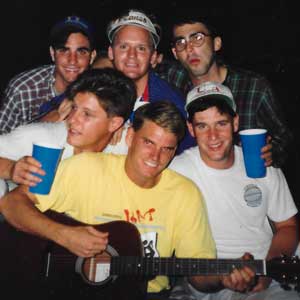


4.96/5 from (5,000+ guitarists)
For All Guitarists
Learn guitar looping the simple way, layer by layer, with in-depth instructional videos, original loops, bonus challenges, PDFs with tabs, and more…
Unlock Your Creativity
Master the pedal, create gorgeous loops and become your own band.
Lifetime Access
Learn at your own pace with full lifetime access to all course materials, plus you’ll be protected by a 14-Day Money-Back Guarantee
Over 5,624 guitarists have created amazing compositions with Loop School
The Magic of Guitar Looping
Playing that seamless loop is an incredible experience.
First you might lay down a simple, playful rhythm with just a handful of notes…
Then, you work in a little harmony – a simple idea but one that grabs your attention and keeps you hooked.
After that, you add a little spice to it with some rhythmic strumming, and the energy of the loop really starts to build.
With every layer, you add richness and flavor, but you’re still leaving space for the composition to come to life.
Everything you play has a reason for being there. The rhythm part is tight and in the pocket, and your chord voicings blend together perfectly.
When you finally start soloing over this warm and energizing backdrop, everything comes together beautifully.
And after holding back for so many layers, you can finally open the track up and let rip…
The result?
A beautifully structured and emotionally complex piece of music that you created.
When you’re looping, you can let yourself get lost in the music… and the possibilities are endless.
It sets you on a journey of discovery, completely free to express yourself through the strings of your guitar.
Because when you’re looping, you aren’t just creating beautiful music – you’re becoming an entire band, from soloist to rhythm section, all on your own. It’s like conducting your own symphony.
And all of this makes looping one of my absolute favorite things to do on the guitar.
But unfortunately, most guitarists never get to experience this…
They have the idea that you need to use complex digital audio workstations, have a lot of different gear or get a whole band involved to create music.
The reality though, is that all you need is a guitar and a simple loop pedal.
This can transform your instrument into an entire band – combining bass, percussion, chords and melody.
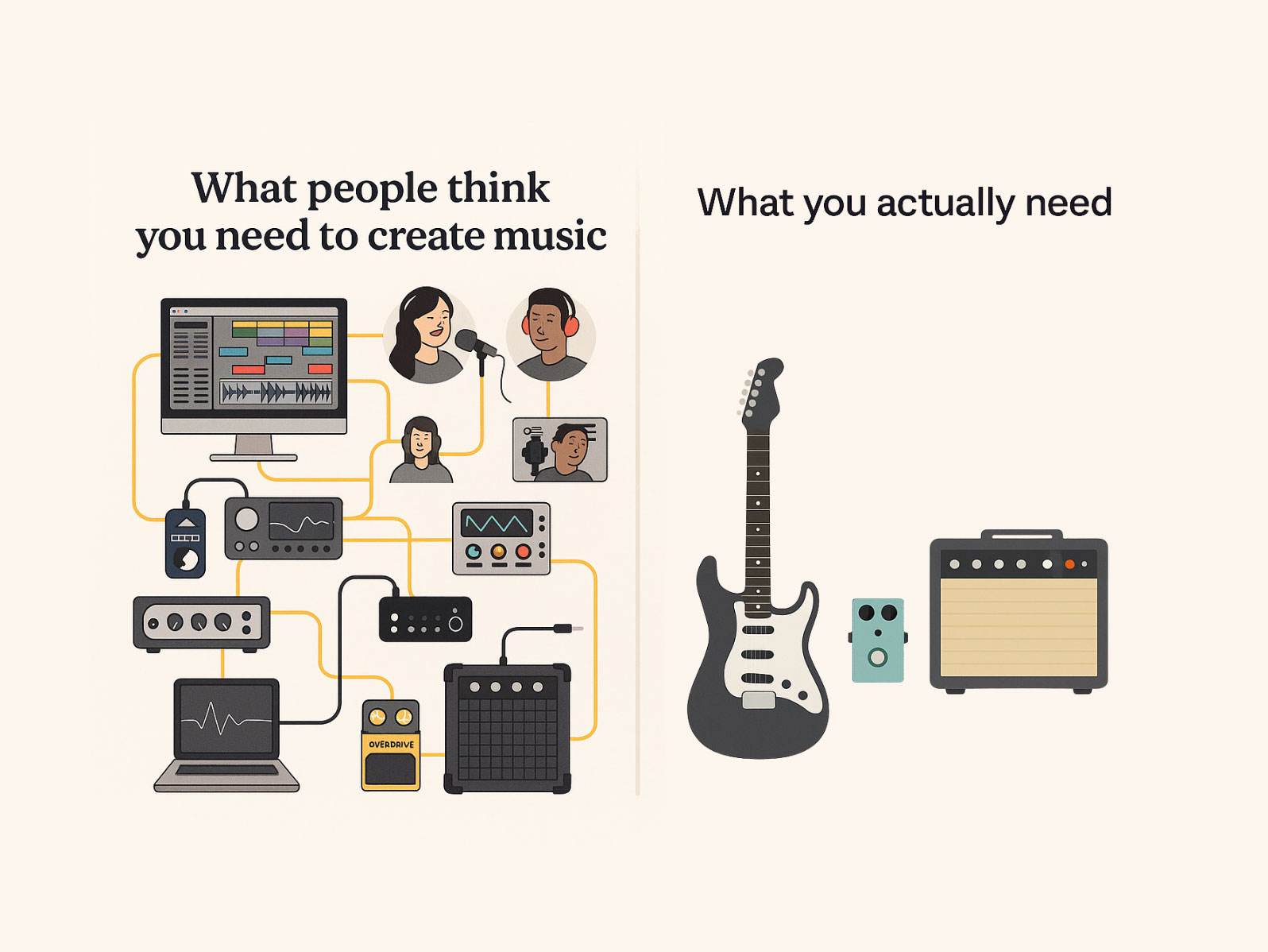
When I fell in love with looping, I realized that it offers so many benefits for guitar players – from understanding chords and progressions, to improving rhythm and timing, and developing a deeper appreciation of your guitar and music.
Yet looping is something that most guitarists will never even try.
For many, it can feel complicated or confusing.
They aren’t sure how to get started, or perhaps they feel overwhelmed by the gear and all of the different options available.
The reality though, is that looping is something that any guitarist can learn with some guidance, strategic practice and an understanding of what makes a great loop.
I wanted to share my love of looping with others, and so I decided to create a course to give guitarists all of the tools they need to master the loop pedal and craft beautiful loops and compositions.
Introducing:
Loop School

Master the loop pedal, create beautiful compositions, and become your own band:
What you’ll find Inside Loop School
There are three different sections to Loop School – each designed to build your looping and song writing skills:
The Classroom
Here you’ll learn the looping fundamentals that are essential when getting started. We’ll cover:
Loop Pedal Setups
The different options available, how to combine loopers with other pedals on your board, and advanced loop pedal options for more experienced players.
Rhythm & Groove
Timing is the most essential element in looping, and it can make or break your loops. In this lesson you’ll learn the most important skills you need to develop rock-solid timing so that each looping layer builds seamlessly on the last.
Amp Settings
The last thing you want when looping are “muddy” sounding layers that blend together. You want each new idea to ring out clearly and push through the mix. How you set up your amp is a vital part of this equation, which we break down in detail in this lesson.
Filling The Space
Learn how to play both “horizontally” and “vertically” – so your loops sound clean and uncluttered, with layers that complement each other beautifully. We’ll look at how you can use note ranges and rhythms to strategically fill the space and create balanced compositions.
The Loops
At the heart of Loop School are 8 original loops that I created for the course. Each one of these has a different vibe, so you can explore a variety of styles while developing your looping skills.
Loop 1: Ready, Set, Loop
The perfect start for looping newbies, and a great test of timing for more seasoned loopers. This loop is easy on the ears and gives you a chance to hone your rhythm skills as you keep each additional layer as tight as you can. This will be the launching point for building a solid looping skillset!
Loop 2: These Moments
A beautiful loop that you can play on either the acoustic or electric. It’s based around a simple chord progression in C Major that feels like it never truly resolves, providing us with the perfect canvas for creating an ear-catching hook over the progression.
Loop 3: Summer Nights
A calm and relaxed loop that demands subtle dynamics and picking hand precision. It provides the perfect background for soulful melodies and improvisations.
Loop 4: Vibrant Voices
A more complex loop which showcases the full richness of the acoustic guitar over 13 beautifully intertwined layers, with chords, melodies, plucks, slaps, and even percussive sounds. The challenge here is keeping your timing tight so that the layers fit together perfectly.
Loop 5: Goodnight
This gentle lullabye in 6/8 time has a lovely mellow lilt, and makes use of drop D tuning. You’ll learn how to integrate multiple instruments into your loop (like a bass guitar!) and we’ll study the importance of dynamics in looping and composition.
Loop 6: Holy Trinity
This loop focuses on three essentials in music: the rhythm, the chords, and the melody. I’ll show you how to set up your early layers using the “tresillo” rhythm, and make sure each additional layer fits with the groove – which is easier said than done! With a focus on voice leading, zoning in on target notes for licks, and building a beautiful solo, I think you’ll have a blast playing this loop!
Loop 7: Both Worlds
This loop combines both the acoustic and electric guitar, using the strengths of each instrument to create a uniquely engaging loop. To make the most of this one, I’ll show you how to keep your timing tight so you can create the perfect backdrop for an epic solo full of feeling. This loop starts with basic ingredients but builds into something that is truly special.
Loop 8: Lyrical Groove
Time to get your picking hand in shape! This loop is built around a groovy 16th note pattern that spells out a gorgeous chord progression in the key of D Major. With a beautiful theme and muted chords, I think you’ll love playing this loop!
Challenges
You’ll also find three challenges inside Loop School – designed to test your creativity and push your looping to the next level:
Finish My Loop
In this first challenge, I provide just one layer of a loop for you to get started. Where you take it and how you build in new layers and melodies is up to you!
Invert the Loop Order
Creating momentum over time and telling a story is an essential part of looping. In this second challenge we’ll look at how to start with simple, ambiguous layers and play with restraint, before treating your audience to the melody!
One Bar Loop
It’s possible to create an amazing loop with just one bar! In this final challenge we’ll look at how you can start with a single idea that builds into musical layers to create an awesome wall of sound.
Includes Expert Support & Community
This isn’t just a course. You’ll learn all of these techniques and concepts as part of the Loop School private community – an awesome and supportive group of thousands of guitarists all working on the same lessons and concepts as you.
And if you get stuck with anything in the course, one of the expert guitar coaches on my team will be there to answer your questions and help you get back on track:

Testimonials
What Students Are Saying

“I bought a looper 3 years ago and thought it would be easy to play and jam about my own stuff, but it wasn’t. I had so many problems and no ideas how to create a great loop and jam over it. And then I found Paul’s looping course. He gave you so many ideas how to get creative and that was, and still is my problem, but it’s better than ever before. I want to say thank you, Paul. Thank you, thank you, thank you. ”
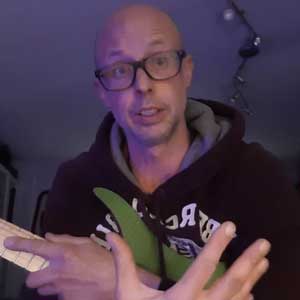
Gerald B.
Loop School Student

“Paul takes you by the hand and walks you through the 8 stages of this wonderfully designed course, thoroughly explaining the concept of live looping, teaching you what type of gear you need and how to use it, how to use your instruments, how to keep the tempo, how to develop ideas for your loops, how to mix them together so that the loop doesn’t sound boring and cluttered. Live loop school is a fantastic journey for a looper wannabe like me. Paul created an excellent course, beautifully filmed and presented. By the end of it, you’ll have a solid foundation for live looping, you’ll know how to do it and you’ll be able to confidently explore your own personal musical ideas. Thanks a lot, Paul.”

Octavian S.
Loop School Student

“What Paul does a wonderful job of is revealing how different pieces of music can sit in each spot. And honestly, I think it’s made me a better musician and it’s helped me to understand how to play with other musicians. The fun part is going through the lessons that Paul has laid out. The looper and the loop school and learning how these things all work together has helped tremendously. Weaving in the dynamics, weaving in the techniques, it’s a little lesson within a lesson every time. I can’t recommend it enough. I think you’ll really, really enjoy it, have a great time with it and it’s a lot of fun. ”

Mike W.
Loop School Student
Join Loop School
Great Value for Guitar Students
When you join Loop School you’ll get lifetime access to all course materials and the private student community. This includes:
- 8 loops and 4 classroom lessons with over three hours of video instruction
- Lesson PDFs with tabs and standard notation
- Access to the Loop School private community
- 3 looping challenges to test your creativity and push your looping to the next level
Plus, you’ll be backed by…
My 14-day money back guarantee
You can dive into Loop School, start looping and experience the magic of creating those seamless loops.
If you don’t absolutely love the course, simply email my team (team@learnpracticeplay.com) within 14 days and they’ll refund your entire purchase, no questions asked.
Get Started
Join Loop School and Start Creating Today
🔥 Most Popular!
One Payment. Lifetime Access.
$129
What’s Included:
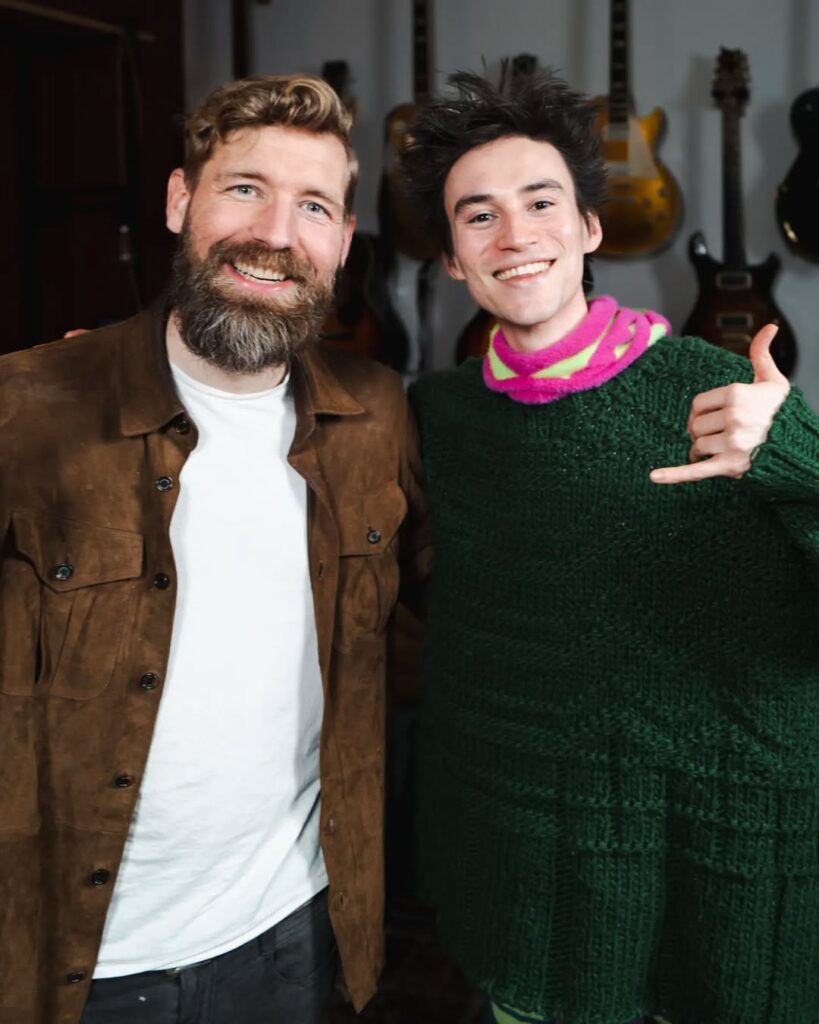
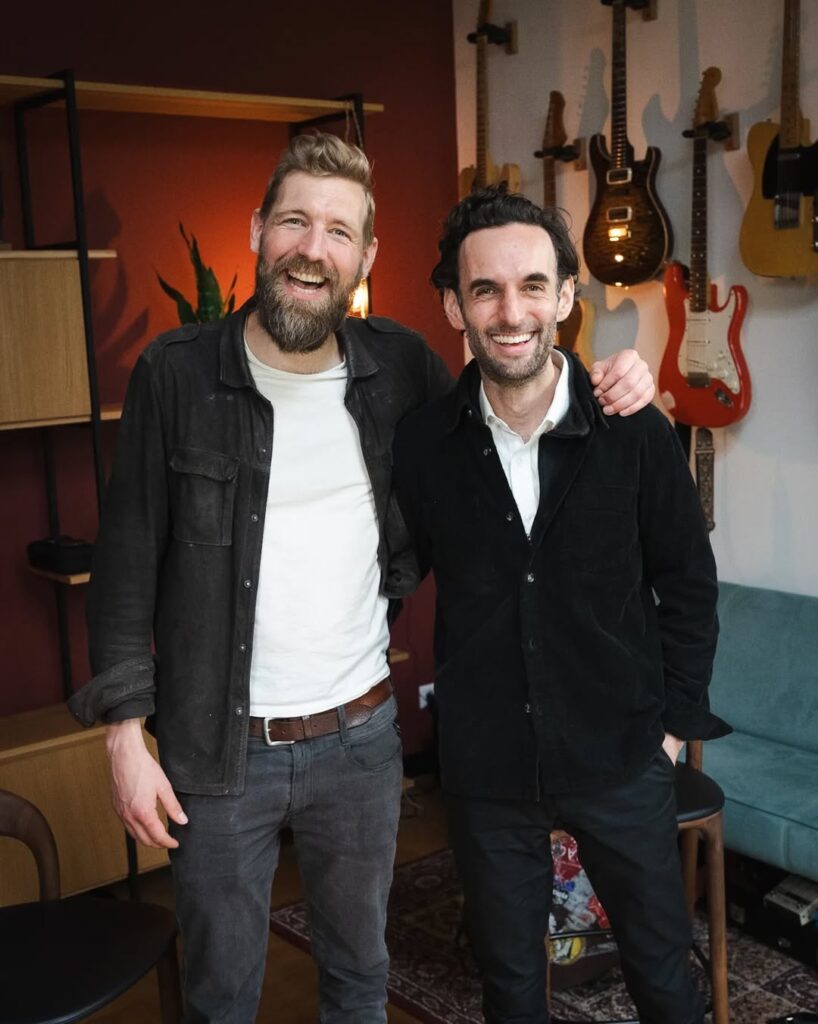
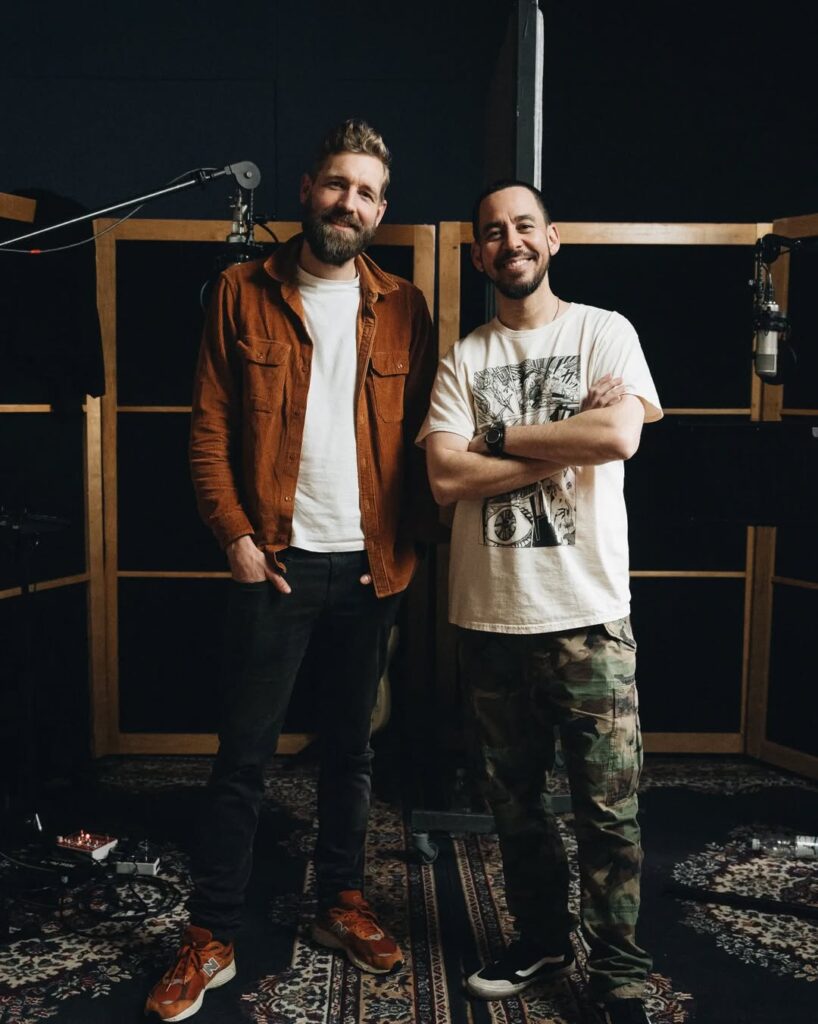
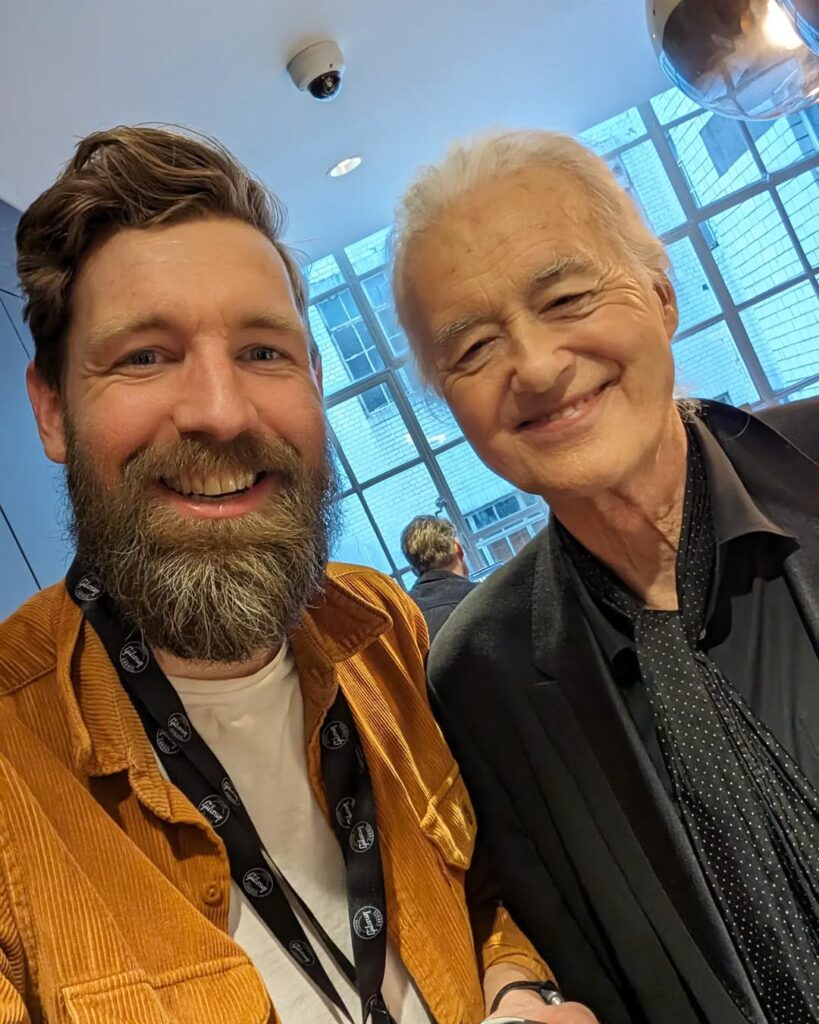
Meet Your Instructor
Hi, my name is Paul.
I first picked up the guitar when I was 12 years old. I was a kid with a red Squier and a dream of playing like Green Day, Metallica, and a local band called ‘de Heideroosjes.’
I quickly fell in love with the guitar and went on to study music with a minor in teaching at Rotterdam Conservatory.
I then split my time between playing live shows and coaching students privately – and over 10 years, worked with hundreds of students and a lot of beginners.
It was around this time that I launched my YouTube channel, and started connecting with thousands of guitarists all over the world.
When I first started playing the guitar, all I wanted to do was to play songs.
I’d spend hours learning my favorite riffs, and trying to shred like Joe Satriani and Steve Vai.
And for many years, I really enjoyed doing this.
But as I advanced as a guitarist I reached a point in my playing where I wanted to create my own ideas. I wanted to challenge myself creatively and bring to life the ideas I had in my head.
So I started writing my own compositions.
And when I started coaching I learned that so many guitarists are in the same position – they don’t just want to learn songs or licks – they want to create music and craft their own compositions.
Yet they don’t always have the tools or knowledge to get started.
There are so many different options out there, and it’s easy to get lost in the complexities of technical set ups and gear.
The reality though, is that with a guitar and a simple loop pedal, you can become a one person band and seamlessly blend bass lines, chords and melodies.

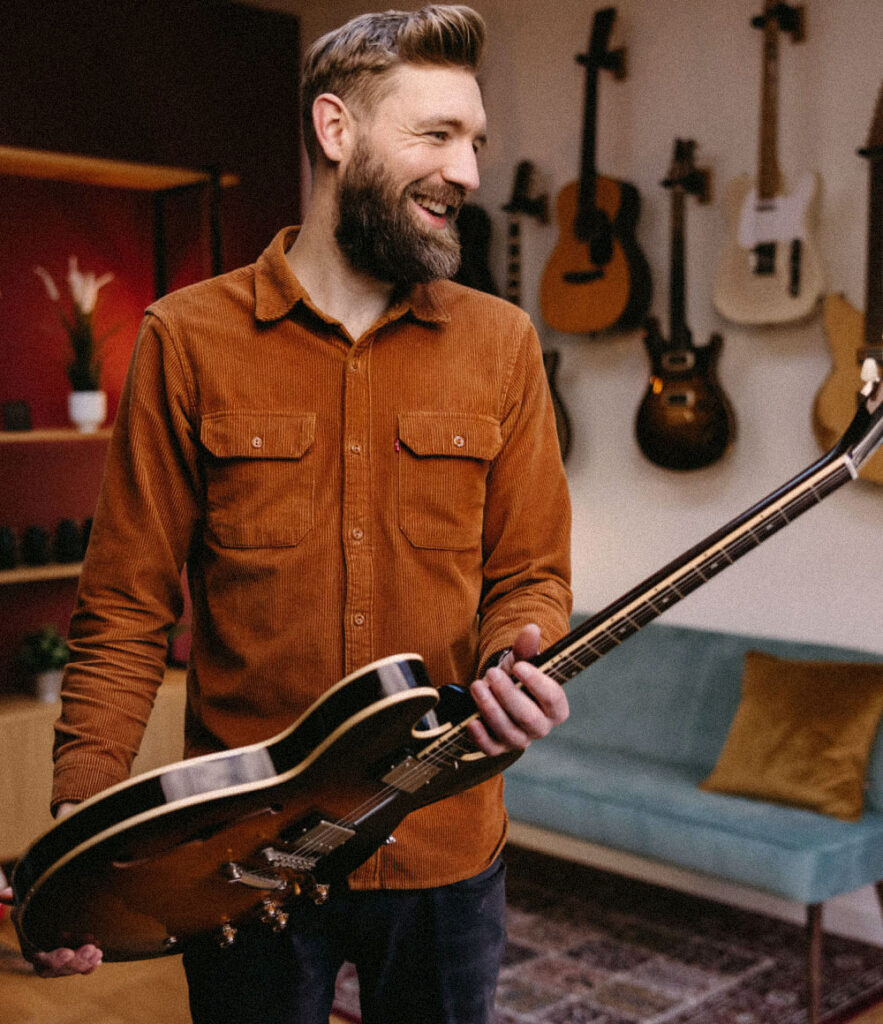
Guitar looping is one of the most enjoyable and creative things I’ve done with my guitar playing.
The way you can structure songs, building from nothing to create the sound of an entire orchestra, is amazing – and you can do it with just your guitar.
It also makes you a better musician and improves a whole range of skills – from composition, to rhythm and timing, and lead playing.
If you want to develop these skills, and experience the deep rewarding feeling of creating your own music on the guitar, I’d love to help you on your journey.
Cheers,
Paul
Frequently Asked Questions
Q. How do I know if this course is right for my level of playing?
This course is open to guitarists of all playing levels, from beginners to those who are intermediate and advanced. Since the focus of the course is on the fundamentals of looping, it is not a particularly technical course for the guitar.
Instead it will teach you looping so you can then create your own music at whatever level you’re comfortable with. Within the course, there are also opportunities to choose how basic or complicated you want to get within the context of particular layers, so you can always choose to challenge yourself or keep it simple.
If you’ve taken any of my other courses, Loop School will be a great next step in your growth as a guitarist.
If you’re just starting out and don’t yet know basic chords or strumming/picking techniques, I suggest you start with Learn, Practice, Play – my step-by-step course for beginners. You can then return to learn looping once you’ve learned the fundamentals.
And if you’re not sure what “level” you’re at, that’s ok! You can join the course and get started, and if it isn’t a good fit, just email my team (team@learnpracticeplay.com) within the first 14 days.
You can get a full refund, or exchange it for my beginner course, Learn, Practice, Play.
Q. What gear do I need for this course?
Any looper will do! So if you have a guitar that you can hook up to the looper (acoustic or electric) you’re good to go. Some loops might be better suited to electric or acoustic, but the majority of the course can be done on either.
Don’t worry if you don’t have a looping pedal yet, or don’t know what to get – I’ll walk you through the basics of choosing a pedal without breaking the bank.
Q. How long does this course take to complete?
This course contains approximately three hours of video content (not counting bonuses), but actually learning the loops can take as much time as you choose to enjoy playing them. With lifetime access to the course, you’ll be able to revisit each section whenever you like.
Q. Do I need to be available at certain times to participate? What happens if my schedule gets busy?
Loop School is a self-paced online course, so you can go through the lessons at any time that is convenient for you. And because you get lifetime access when you join, you don’t need to worry about your schedule getting busy.
If something does come up in your schedule that prevents you from starting right away or slows down your progress, the course will always be available for you to pick up again whenever you can come back to it.
Q. What if I don’t like the course?
There is a 14-day money back guarantee. So you can try the course out and see if it’s right for you. If you don’t love it, just send my team an email (team@learnpracticeplay.com). They’ll give you a full refund, no questions asked.